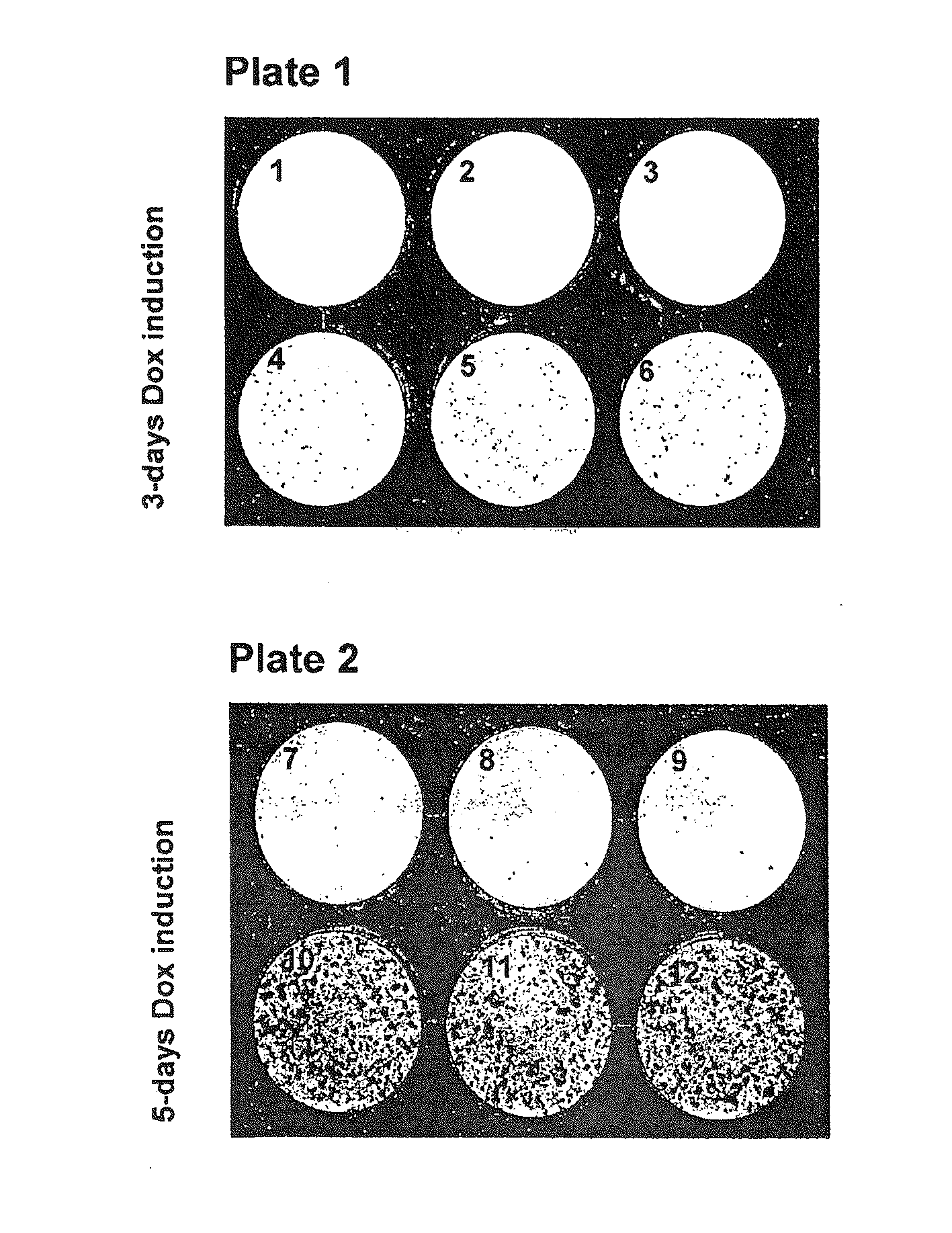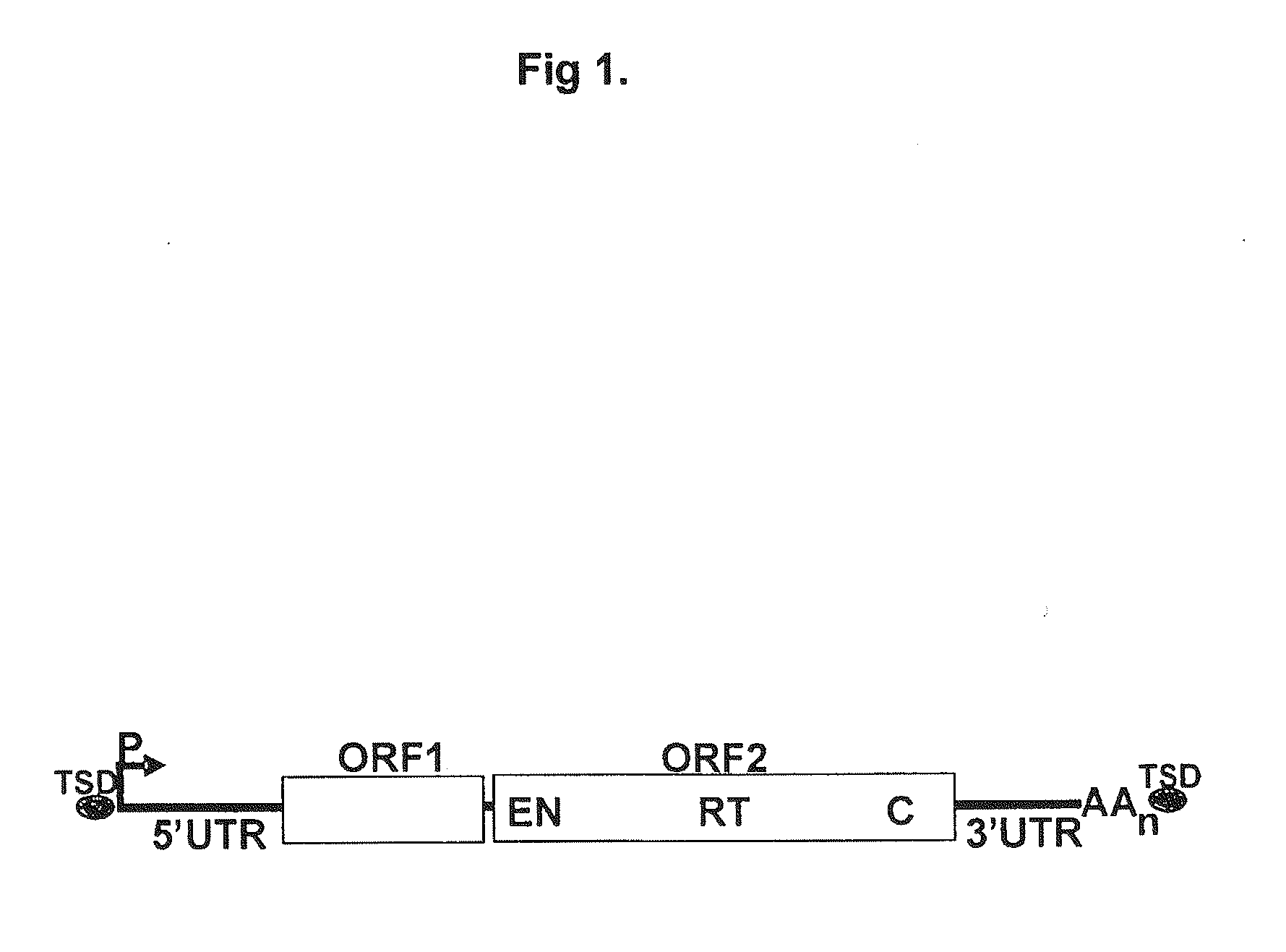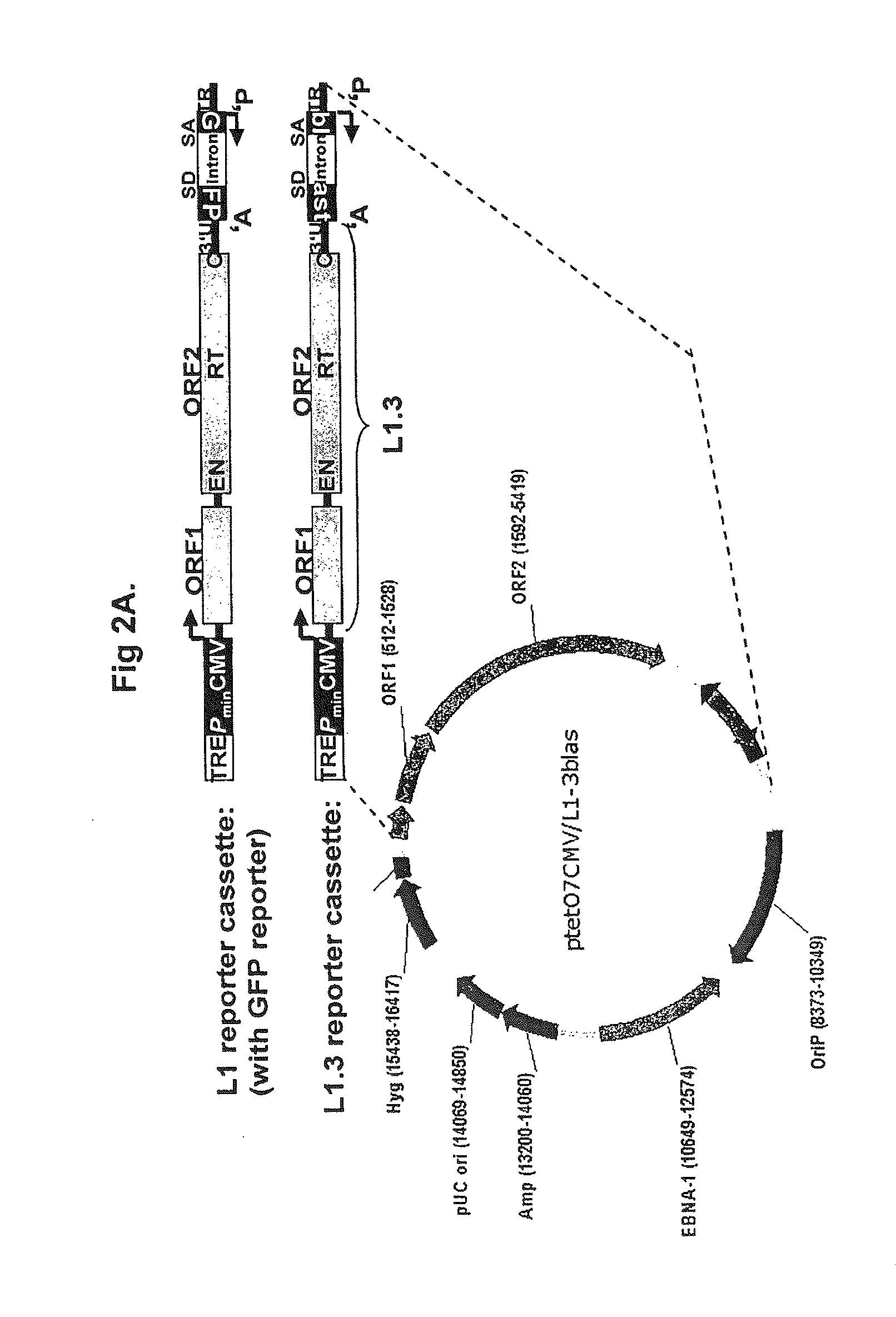Controlled Activation of Non-LTR Retrotransposons in Mammals
a non-ltr retrotransposons, controlled technology, applied in the direction of sugar derivatives, biochemistry apparatus and processes, applications, etc., can solve the problem of affecting the amount of dna in the genome, hampered control application of line-1 as a tool for random mutagenesis, and the inability to transfer disclosed techniques to mammalian cells, etc., to achieve the effect of more stress
- Summary
- Abstract
- Description
- Claims
- Application Information
AI Technical Summary
Benefits of technology
Problems solved by technology
Method used
Image
Examples
example 1
General Experimental Approach
[0115]
Detailed Experimental Protocol:
[0116]M2-HeLa cells (Hampf & Gossen, 2006, Anal Biochem.; 356(1):94-9) were used together with the inducible L1-retrotransposition-reporter-plasmid ptetO7CMV / L1.3blas (FIG. 2A). M2-HeLa cells express the transactivator-protein rtTA. The cells were cultivated in D-MEM (BIOCHROM AG) with 4.5 g glucose (SIGMA), 10% FCS (BIOWEST), 2 mM glutamine (BIOCHROM AG), and 250 μg geneticine / ml (GIBCO or INVITROGEN) at 37° C. and 5% CO2. 2×105 M2-HeLa cells were seeded per well of a six-well plate. 24 hours later the cells were incubated with the transfection reagent GeneJuice (Novagen) containing 1 μg ptetO7CMV / L1.3blas (16976 bp) according to the instructions of the manufacturer. Concurrently, doxycycline (Dox, final concentration 100 ng / ml) (SIGMA) were added to the medium. 24 hours after the addition of ptetO7CMV / L1.3blas the selection of transfected cells was initiated by adding hygromycin (final concentration, 300 μg / ml) (INV...
example 2
[0117]The system described in example 1 is used to analyse the role of double-strand break (DSB) repair enzymes during L1-retrotransposition. Dominant negative mutants, shRNA constructs, and siRNA acting on said enzymes or on the expression of said enzymes are used to influence the activity / expression of these enzymes. The Tet-On / Off system can be used to activate L1-retrotransposition only during the time period the DSB repair enzymes are influenced in the above described way. In this way, only those L1 retrotransposition events are analyzed that took place in the presence of the modified DSB repair protein expression.
example 3
Timecourse Experiment Demonstrating Induction of L1 Expression Over Time after Dox-Addition
[0118]Four T75-flasks containing 6×106 M2-HeLa cells in DMEM-Medium each were transfected with 6 μg of the inducible L1 reporter plasmid ptet07CMV / L1.3blas (FIG. 3A).
[0119]One day after transfection, transfected M2-HeLa cells were selected for the presence of the inducible L1 reporter construct by adding hygromycin (final cone. 300 μg / ml) to the growth medium.
[0120]DMEM medium containing hygromycin was changed twice a week.
[0121]After 17 days of hygromycin selection, ptet07CMV / L1.3blas-containing cells were harvested and cells were dispersed on eight 10-cm dishes with 1.7×106 cells per dish.
[0122]With the exception of two plates, doxycyclin was added to each plate to a final concentration of 200 ng / ml to induce transcription of the L1-reporter element localized on ptet07CMV / L1.3blas.
[0123]Cells were harvested 0, 6, 12 or 24 hours after dox-addition. For each timepoint, 3.4×106 cells (two plate...
PUM
| Property | Measurement | Unit |
|---|---|---|
| Electrical resistance | aaaaa | aaaaa |
| Responsivity | aaaaa | aaaaa |
| Fluorescence | aaaaa | aaaaa |
Abstract
Description
Claims
Application Information
 Login to View More
Login to View More - R&D
- Intellectual Property
- Life Sciences
- Materials
- Tech Scout
- Unparalleled Data Quality
- Higher Quality Content
- 60% Fewer Hallucinations
Browse by: Latest US Patents, China's latest patents, Technical Efficacy Thesaurus, Application Domain, Technology Topic, Popular Technical Reports.
© 2025 PatSnap. All rights reserved.Legal|Privacy policy|Modern Slavery Act Transparency Statement|Sitemap|About US| Contact US: help@patsnap.com



